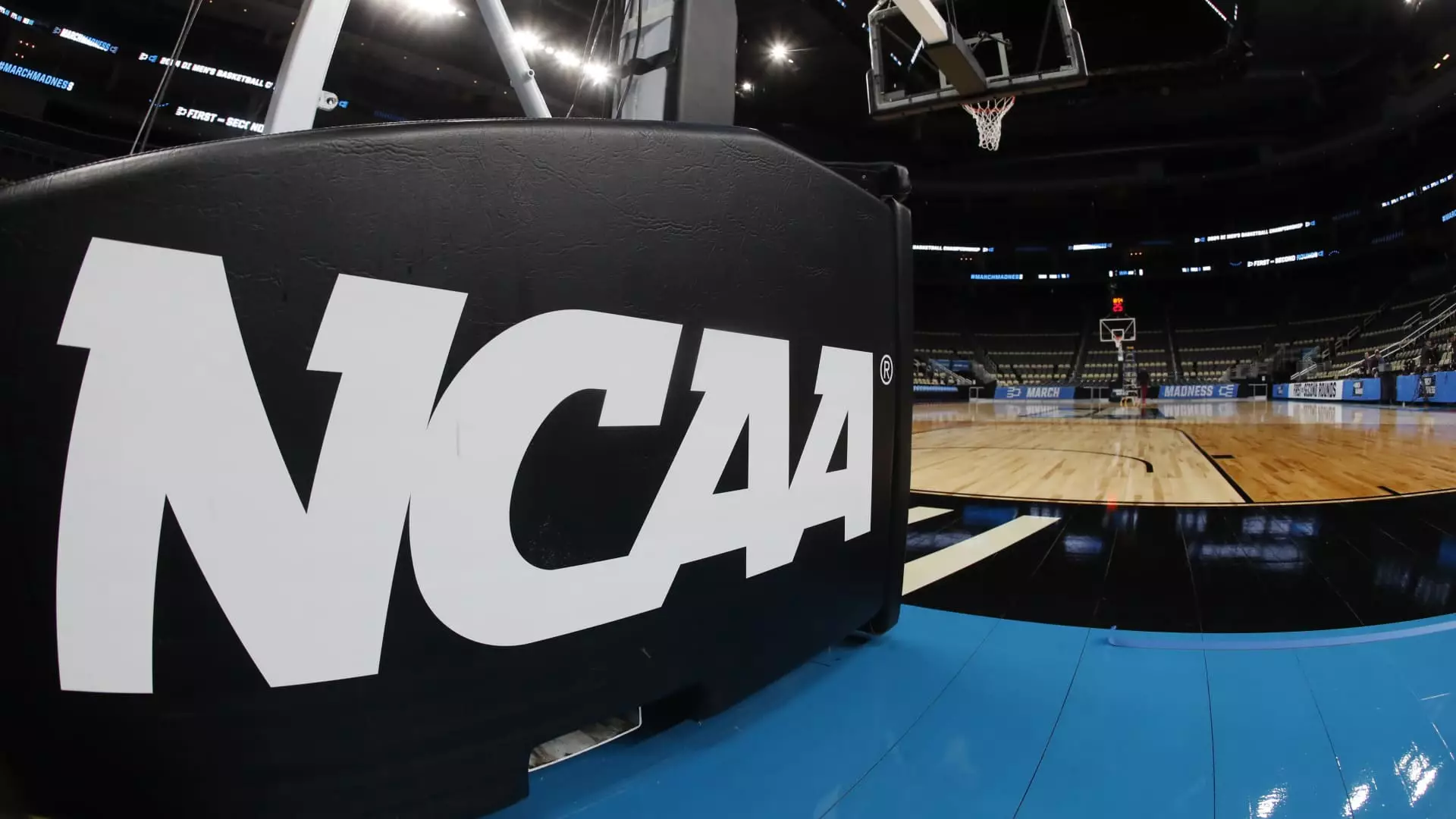The National Collegiate Athletic Association (NCAA) has recently made headlines by revising its regulations concerning transgender student-athletes. This shift comes on the heels of politically charged actions from various governmental factions, particularly following an executive order by former President Trump. The new policy restricts trans women from participating in women’s sports while offering a convoluted approach to inclusivity for all genders. This move not only sends ripples through the sporting community but raises critical questions about equity, identity, and the evolving understanding of gender within athletics.
The NCAA’s latest directive explicitly bars trans women—those assigned male at birth—from taking part in competitive events alongside cisgender female athletes. Interestingly, under these new regulations, trans individuals assigned male at birth are still permitted to train with women’s teams and enjoy related benefits like medical care. Yet, they are effectively sidelined in competitive scenarios. This delineation demonstrates an organizational attempt to create a framework that balances competitive fairness with some level of acceptance.
Meanwhile, individuals assigned female at birth who are undergoing testosterone treatments for various reasons—including hormone therapy—are also prohibited from participating in women’s events. This policy reflects a binary view of gender, depicting it as strictly male or female and failing to capture the complexities of gender identity and expression. While the NCAA intends to apply consistent eligibility standards, the criteria it uses do not encompass the full spectrum of gender identities present in today’s society.
This policy shift correlates directly with President Trump’s executive order aimed at eliminating federally funded support for schools that include trans women in women’s sports. This approach caters to a political agenda that often frames gender identity issues as divisive rather than as opportunities for inclusion. The NCAA’s decision to align itself with such a narrow ideological perspective raises concerns about the future of equity in sports. Critically, it questions whether administrative policies should prioritize competitive integrity over the rights and identities of student-athletes.
Interestingly, NCAA President Charlie Baker mentioned in a Senate hearing that there are fewer than ten current trans athletes within the organization. This raises queries regarding the rationale behind implementing such sweeping changes when the number of affected individuals is so small. Are these moves truly in the best interest of student-athletes, or are they more reflective of prevailing political sentiments?
Responses to the NCAA’s policy shift have been fervent. Advocates like transgender triathlete Chris Mosier have articulated the concerns regarding the implications of defining gender strictly based on assigned sex at birth. Mosier points out that such a framework not only marginalizes trans and nonbinary individuals but also endangers intersex individuals and others who may require hormone therapy for legitimate medical reasons.
Organizations such as GLAAD have condemned these developments, characterizing them as regressive and devoid of empirical support. Their assertion highlights a fundamental flaw in allowing political narratives to dictate policies affecting the lives of young athletes. The medical, scientific, and human rights implications are substantial and deserve a nuanced approach rather than a one-size-fits-all resolution that caters to a binary understanding of gender.
As sports organizations, educational institutions, and society grapple with the complexities of gender identity, the NCAA’s policy serves as a cautionary tale about the consequences of oversimplifying these issues. The need for inclusive practices informed by comprehensive research and human experiences is vital. Solutions should promote fairness and equity without alienating or marginalizing any group of student-athletes.
The difficult path of reconciling competitive integrity with inclusivity may require re-examining existing frameworks, integrating diverse voices, and fostering dialogue that includes athlete experiences. The conversation must shift from exclusionary practices toward creating environments where all student-athletes are empowered to thrive.
The NCAA finds itself at a crossroads, where the decisions it makes will resonate well beyond the realm of collegiate sports. The clarity of this policy may seem appealing on the surface, but the underlying complexities of identity demand much deeper scrutiny. As this debate continues, stakeholders must prioritize championing equality and embracing the richness of human diversity in sports.

